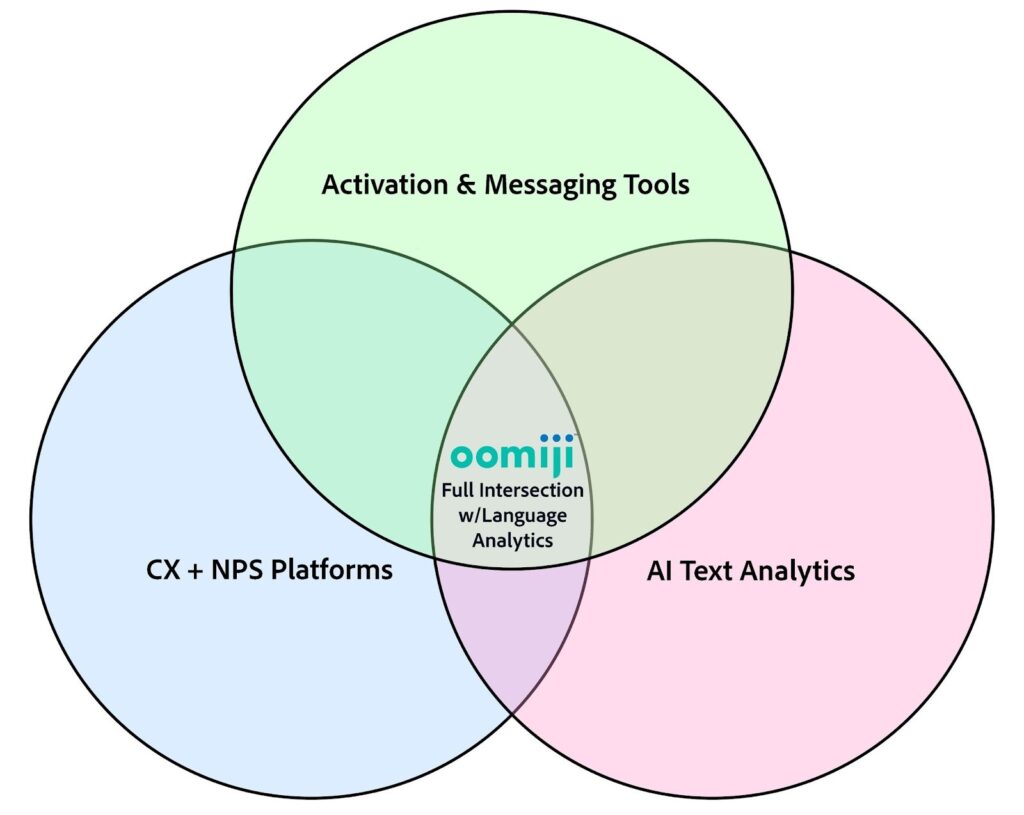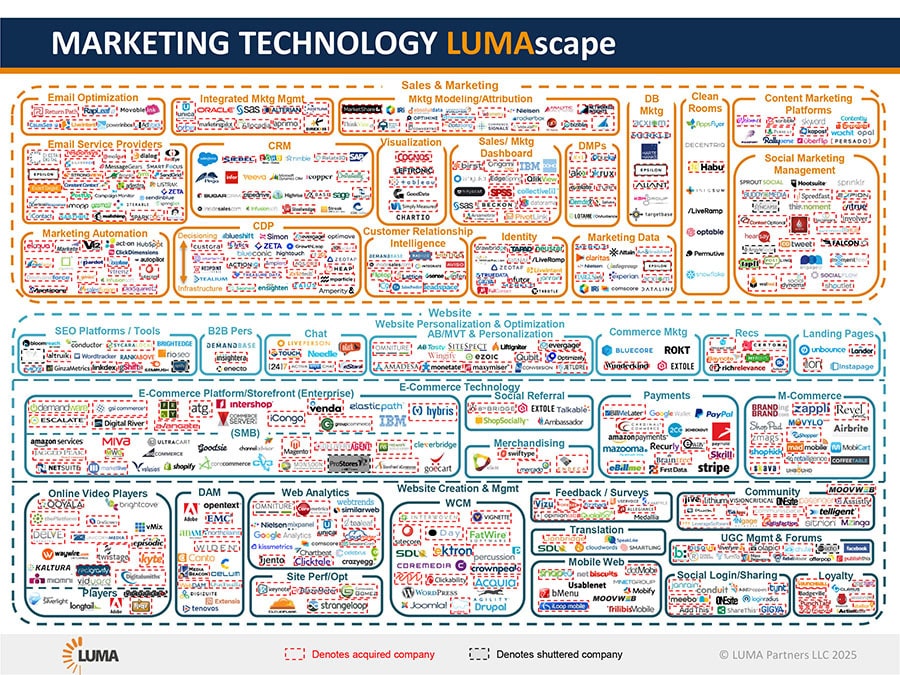Why Customer Language Is the Missing Link

Moving Beyond Tools to Uncover True Customer Motivation and Drive Growth
The other day, I spoke with a marketer who is using nine different platforms, each with its own array of tools—NPS platforms, survey tools, analytics suites, CDPs, ESPs—all generating endless data, but none providing an integrated solution to answering the most important question: Why do customers think and act the way they do?
With the proliferation of marketing tools, I am reminded of what Harvard Professor Theodore Levitt’s wrote way back in 1960: “People don’t want to buy a quarter-inch drill; they want a quarter-inch hole.” Many years later, one of my business school professors said it a different way, “If you could make a hole with your finger, would you ever buy a drill?” He was trying to get us to focus on solutions not tools. One look at the chart below shows how in today’s digital world, that message seems to be lost.

Thousands of different digital marketing tools are available to tell you what your customers do but none can tell you why. There are so many tools, it can make you dizzy just trying to figure out who does what and how it relates to others. Traditional CX and NPS tools measure satisfaction but don’t explain it; segmentation platforms tell you who bought but not why; and marketing tools help you send messages but can’t tell you what to say. The result is the same everywhere: fragmented insight, generic personalization, and slow, expensive interpretation cycles that still leave marketers guessing.
If we go back to Theodore Levitt’s time, customers walked into stores and talked to salespeople. Salespeople were trained to ask questions and listen carefully to customers’ motivations, perceptions and emotions and to tailor their sales pitch to what the customer was expressing. But today, it seems we’ve forgotten the importance of language and how it offers the keys to building relationships with our best customers.
The solution is to capture what customers say in their own words, turns that language into motivations, emotions, friction points, and identifies markers, and appends them to every individual profile—something none of the traditional CX or NPS platforms do.
Transforming zero-party customer language into a complete, closed-loop growth engine is a digital way of mimicking the salesperson/customer conversation and can reveal why your best customers love you, why those who are ambivalent hesitate, and why that unhappy lot leave. That then puts you in a good position to activate clear steps to address each group, assuming you can connect those insights directly to segmentation and messaging. Customer communications are most successful if driven by the language, needs, and beliefs of each segment.
There are five solution based capabilities that a marketing platform has to provide to enable marketing by conversational analysis:
- Appending customer language to each individual’s file
- Segmentation by language spoken by the customer (not by sentiment or AI category only)
- One-click analysis + marketing recommendations on any amount of zero-party text
- Capturing NPS language → appending to individual record + one-click NPS analysis
- Email capability without third-party ESP
You probably already guessed where I’m headed. Oomiji contains all of those capabilities. In other words, Oomiji solves the pain marketers feel every day: too much data, not enough clarity; too many tools, not enough connection; too many dashboards, not enough direction. It’s the only platform that unifies research, insight, segmentation, and activation—so brands can stop guessing and finally speak to their customers in the language that actually moves them.
